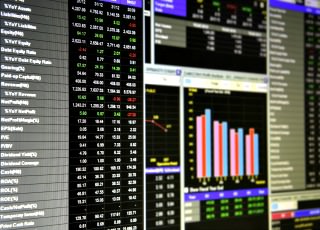Technical analysis can improve your performance

Technical analysis can help you make wiser decisions when it comes to trading in stocks, futures, Forex or other tradable investments. It’s one of the two main ways of finding a good investment and making good trading decisions, with the other type of study being the fundamental school of thought.
Technical analysis uses information such as the price movement of a security, to help formulate patterns. Fundamental analysis focuses more on types of information such as financial statements and economic factors that might affect the intrinsic value of an investment. When using a technical style, you’re more interested in whether the market is rising or dropping, rather than why it’s rising or dropping.
Analysis styles
If you’re new to trading, learning both styles of trading can be extremely beneficial. Fundamentals often take a long-term approach while the technical uses data from a far shorter time frame, such as a few days or even a few hours. Day traders tend to use a technical approach since they aren’t looking for investments to buy and hold, but ones to buy and sell quickly for a profit. The average investor who wants a portfolio containing both “buy and hold” investments and those they sell relatively quickly for profit, finds it important to understand both investment review styles.
Even though technical review uses more short term information, the longer you create weekly or monthly charts, the more information you’ll have and the better you can establish trends. While some investors, particularly seasoned ones, use programs they purchased to chart or use other charting sites. It’s nice to find a brokerage that offers charting capabilities built into their platforms and educational seminars or sessions to help you maximize their use. The more data the charting tool allows and the longer term it can chart, the more you’ll benefit from it. Longer term data charts can help you identify the trends in short term charts.
To gather slowly and laboriously
In order to succeed at charting movements, you have to be able to read the charts and learn to determine the trends. You also have to know which trends to follow for your overall goal. You’ll also need to know how to find the support and resistance levels of each investment and why these are important. Technical review through charting can show you how a particular investment reacted during a previous trend---whether up or down. And you can use that information to retrace those steps the next time you see that type of movement appear.
If you’re lucky enough to have a brokerage site that offers both charting tools and education. Learn how to use that information, it gives you a good start on investing and saves you the cost and time of purchasing your program. Even if you eventually decide you want more, you’ll at least have background information to help you make a wiser selection of tools.
Whether you ultimately choose to use technical or fundamental analysis, you should have a working decision of each. More advanced traders are always gleaning new ways to use the technical information since there’s so much to learn. Whether it’s tracking moving averages, looking for support and resistance lines or tracking oscillators. Adding more knowledge to your trading skills can help you become a successful and accomplished trader, no matter what type of investment, Forex, stocks, options, futures or ETFs.
Related articles
Understanding Technical Analysis Software
Financial news and your trading plan that you need to know
News and analysis data usefulness
Introduction to technical analysis
Types of market analysis used in trading markets
About the trend analysis
Appling technical analysis indicators